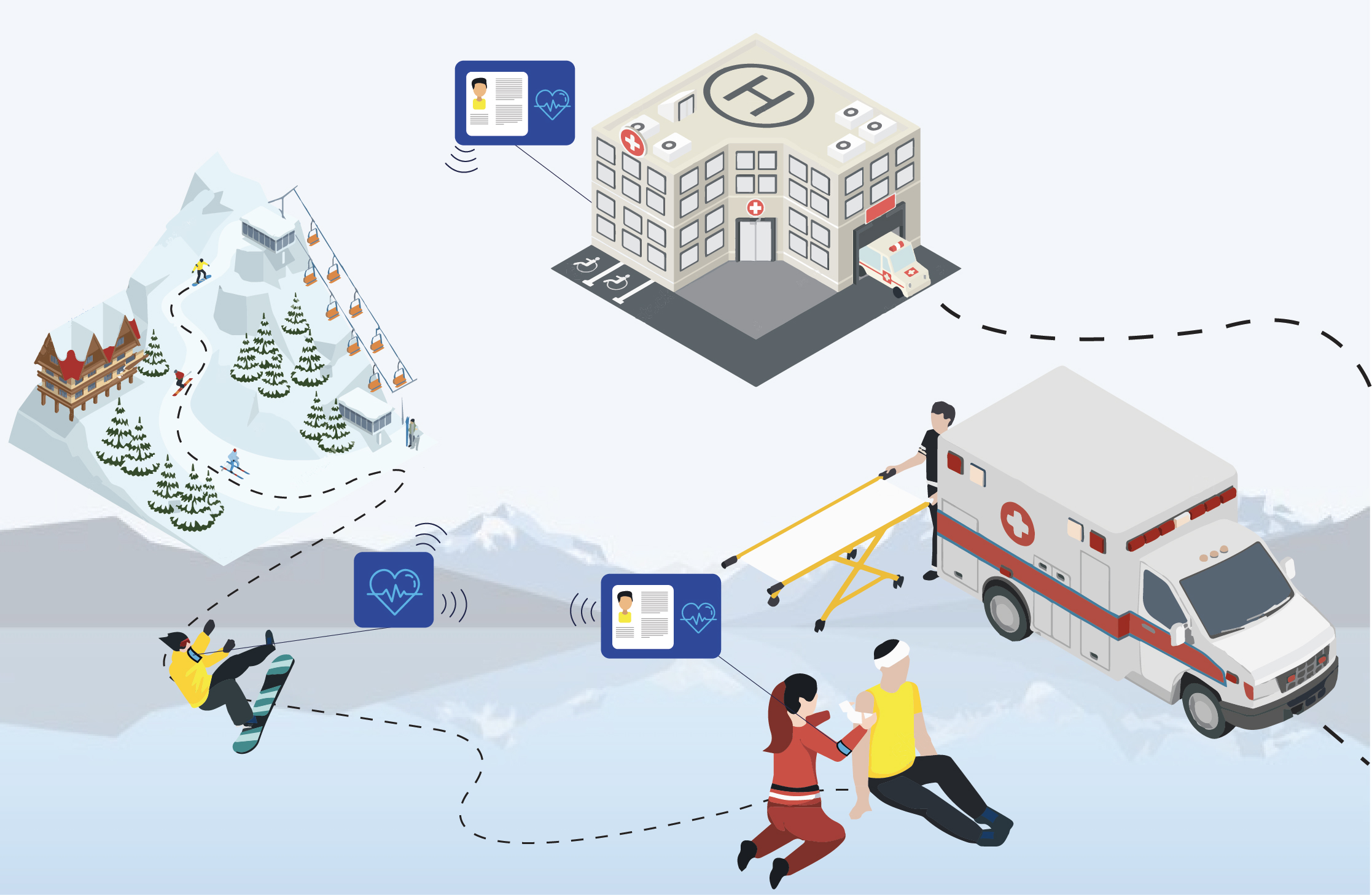Remote Health System
RHS is a global solution. It collects critical information (vital signs data and videos) of a victim in a medical emergency, using a connected box, which, assisted by artificial intelligence, communicates autonomously with medical staff and dedicated emergency services. RHS can also be used in conjunction with doctors’ medical systems for reliable telemedicine diagnoses. Patients located in areas remote from medical facilities, or requiring assistance or medical consultations outside of usual hours, may also be served.
How does it work?
Data from the RHS device, which is worn on the forearm, is processed by algorithms matching it to medical databases. The resulting analysis allows the RHS system to offer one or more diagnoses that the victim can implement alone (if they are conscious) or, if not, performed by the medical staff.
The system also manages the logistics of patient care. It assists the rescue center, by sending all the patient vital signs data (an automatic voice call service pinpoints the position of the subject and / or sends a PDF file by email). It triggers and organizes the emergency supply-chain (doctor, first aid service etc.).
Markets for the service also include the military, people working alone, athletes, families and the elderly.

Today, there is no device that gives a complete self-diagnosis of the patient. The RHS system gathers 11 sensors in one box. It allows a complete analysis (pulse oximeter, a needle-less blood test, blood pressure sensor etc.)

When a soldier is injured, the doctor at the base is immediately notified. If all soldiers under his care use the box, he will be able to monitor all of their vital signs. The condition of the soldier is transmitted (in an encrypted format) to the command center in real time to organize the care required.
If an athlete (mountaineer, cyclist, skier, hiker, hunter, etc.) is injured, the system will analyze the severity of the wounds and propose a diagnosis. Rescuers will know the position of the casualty, and his condition in real time, to organize the appropriate rescue or treatment.


If isolated workers (lumberjacks, mine workers, oil rig workers, farmers, etc.) are injured, the box measures their vital signs and helps prevent emergencies by proposing suitable solutions.
